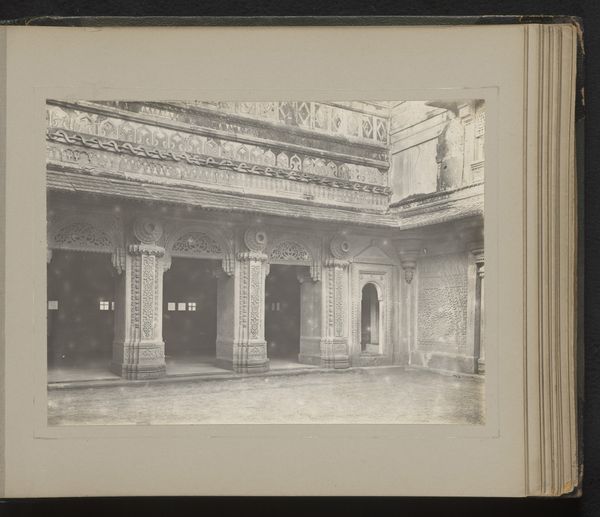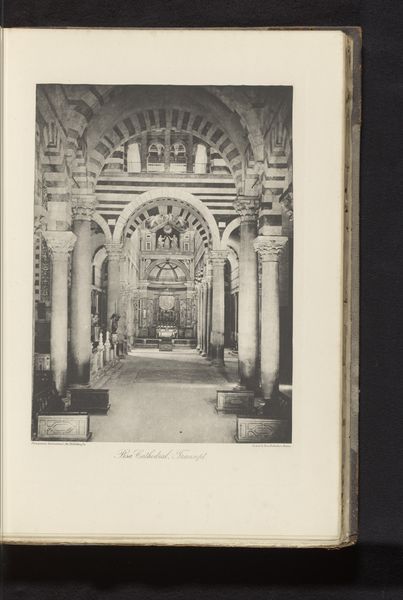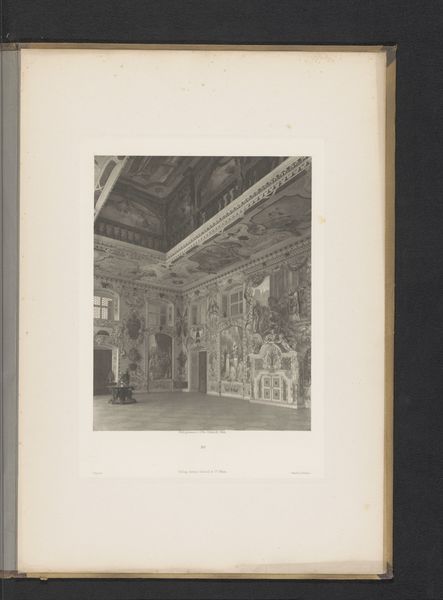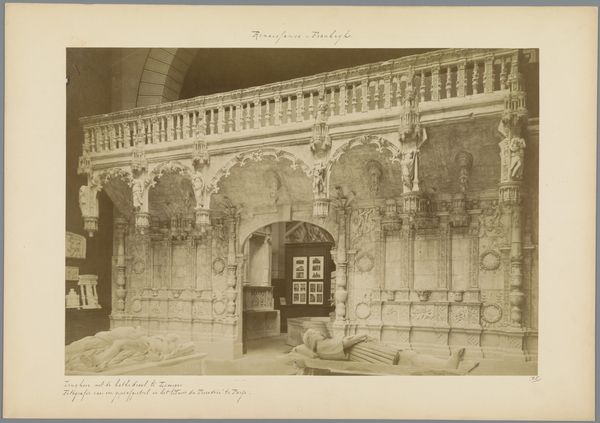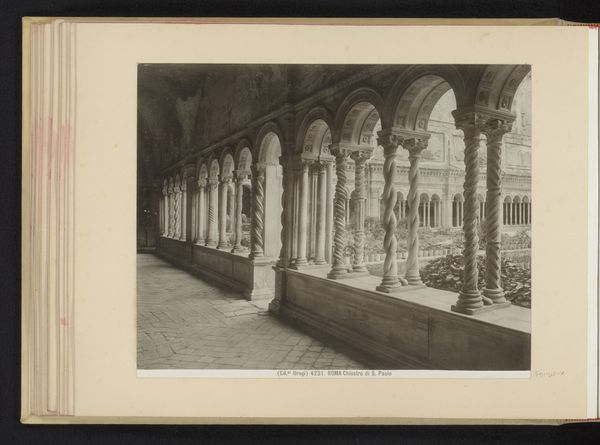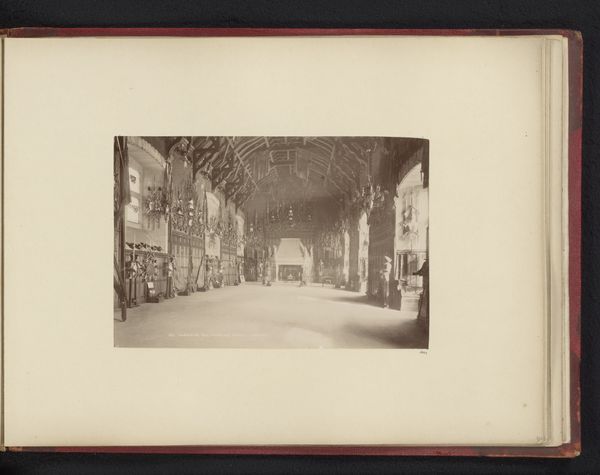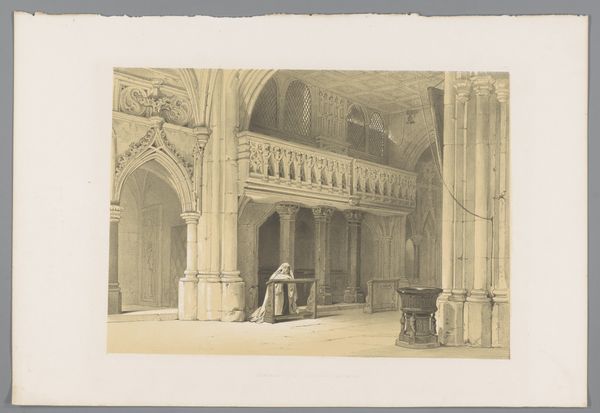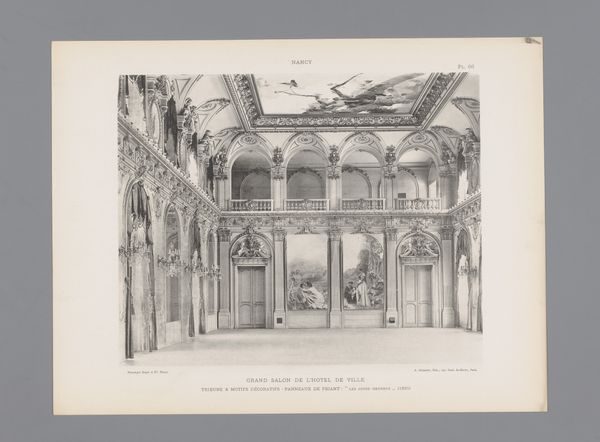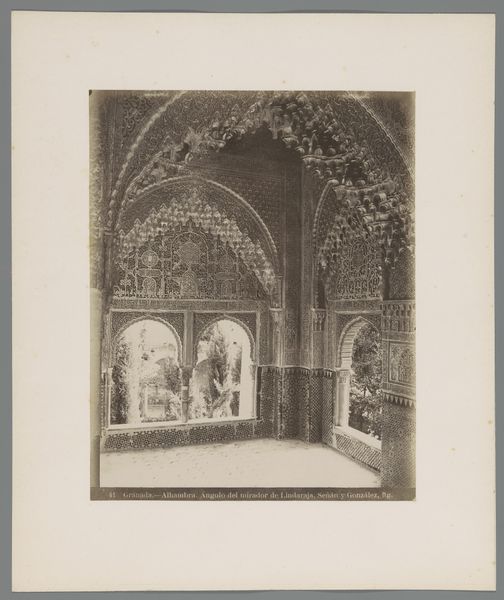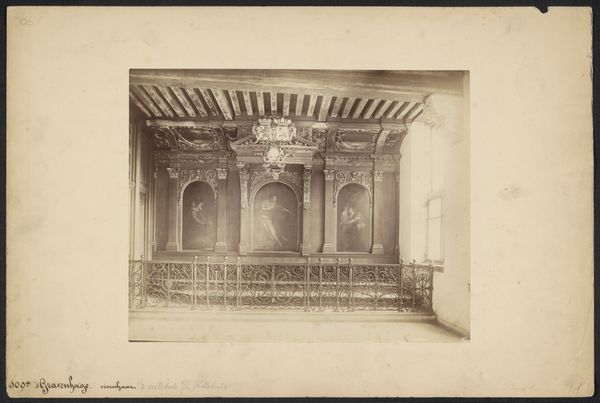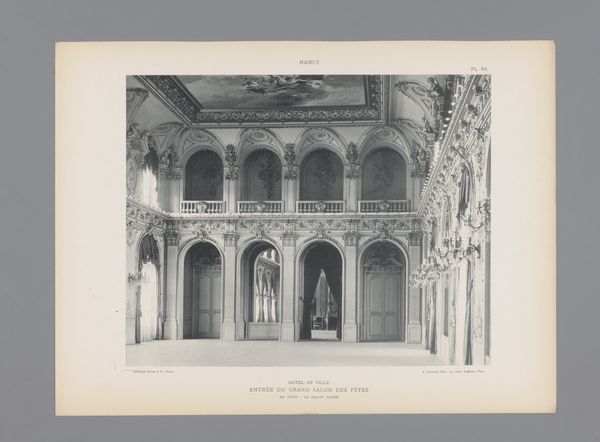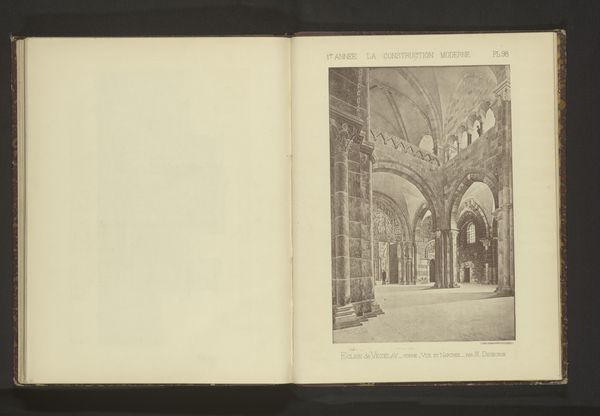
photography, albumen-print
#
landscape
#
photography
#
ancient-mediterranean
#
albumen-print
Dimensions: height 148 mm, width 208 mm
Copyright: Rijks Museum: Open Domain
Curator: This photograph, created around 1900 by K.H. Mawal, is entitled “Binnenplaats van het paleis van Raja Mansingh.” It’s an albumen print capturing a courtyard of the Raja Mansingh palace. Editor: Wow, talk about echoing chambers. I can almost hear the whispers and the faint sound of footsteps. There's something haunting about the light, and the repetition of those arched doorways is mesmerizing, like peering into endless possibilities. Curator: Yes, albumen prints were favored for their ability to render incredible detail. This one highlights the architecture with sharp precision. If you look closely, the interplay of light and shadow across the carved surfaces really emphasizes its textures. It's also significant when we consider what it omits – the social life contained by these walls. Editor: You're right, the details draw me in—but the silence is so present. It’s a stage set without the play. Makes you wonder who walked here, what stories these stones could tell if they opened up. What kind of social conventions defined the people that walked this courtyard. Curator: This image resonates with complex layers. Photography, particularly during the colonial era, served as a means to document, but also to categorize and possess spaces and cultures. Consider who was behind the camera and what perspective they aimed to convey to audiences back home. We can interpret that against how it represents the ancient motifs found in the artwork and building structures. Editor: Oh, totally, the colonial gaze. You can almost feel it shaping the scene, framing it. But I also feel a sense of resilience. These arches, this meticulously crafted space, it stands defiant in its beauty. It outlives empires. It also presents an argument for understanding ancient architectural methods against modern ideals. Curator: Absolutely. This courtyard, beyond its aesthetic appeal, serves as a powerful statement about cultural preservation, identity and resistance. It encourages a continuous negotiation of the past within the present, refusing a singular narrative. Editor: It's wild, isn't it? How something so seemingly still can stir up so much. A silent witness to so much change, holding onto stories in its very bones. It makes you appreciate the importance of preservation, the quiet power of memory.
Comments
No comments
Be the first to comment and join the conversation on the ultimate creative platform.
